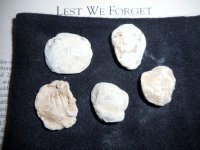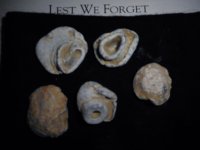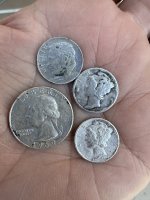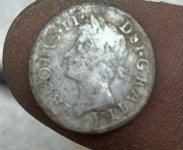Joe G from Md
Hero Member
- Dec 23, 2017
- 618
- 1,637
- Detector(s) used
- Whites 6000Di Pro plus/ Whites 5900/ started with Whites 4900
- Primary Interest:
- All Treasure Hunting
Years ago had permission to hunt a property with an abandoned Church. The Church was used as hospital after battle of Antietam, found these fired bullets just outside window where amputated limbs where piled. A few of these may have been fatal.
Attachments
Upvote
0










